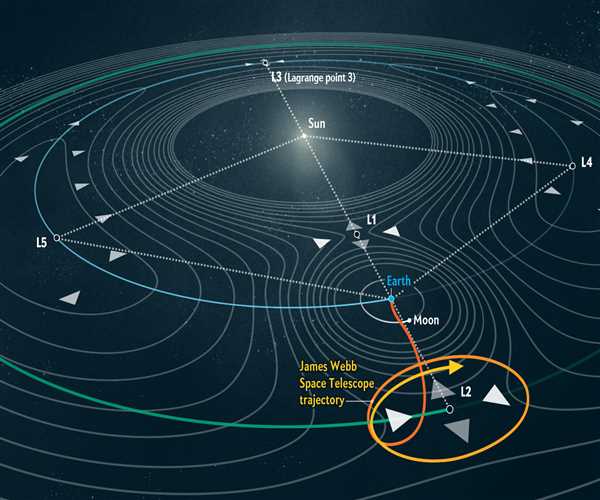The James Webb Space Telescope (JWST) will be located at a distance of approximately 1.5 million kilometers (about 930,000 miles) from Earth. This is roughly four times farther away than the orbit of the moon.
The telescope's distance from Earth is a crucial part of its design, as it is intended to operate in a region of space known as the second Lagrange point, or L2. This is a special location in space where the gravitational forces of the Earth and the sun balance out, allowing the telescope to maintain a stable position with respect to both bodies. By operating in this location, the JWST will be able to observe the universe with unprecedented clarity, free from the interference of Earth's atmosphere and the heat and light pollution of our planet.

To reach its final destination at L2, the JWST will be launched on an Ariane 5 rocket from the European Spaceport in French Guiana. The launch is currently scheduled for December 22, 2021. After launch, the telescope will undergo a complex series of deployments and maneuvers to reach its final orbit, a process that will take several weeks to complete.
Once it arrives at L2, the JWST will begin a series of scientific observations that are expected to revolutionize our understanding of the universe. The telescope is equipped with a suite of advanced scientific instruments, including a large, segmented primary mirror that will allow it to capture images and spectra of distant objects with unparalleled sensitivity and resolution.
The distance between the JWST and Earth will pose some challenges for mission operations and communication. Because of the large distance involved, it will take several seconds for commands to reach the telescope and for data to be transmitted back to Earth. To overcome this, the JWST will be equipped with a high-gain antenna that can transmit data at a rate of up to 100 megabits per second. Additionally, the telescope will be operated by a team of scientists and engineers located at the Space Telescope Science Institute in Baltimore, Maryland, who will use a complex system of ground-based and space-based communications to control and monitor the telescope's activities.
Despite the challenges involved in operating a telescope at such a large distance, the JWST is expected to provide a wealth of new scientific discoveries, ranging from the study of the earliest galaxies and stars in the universe to the search for habitable planets around nearby stars. The telescope's observations are expected to transform our understanding of the cosmos and pave the way for new discoveries for years to come.